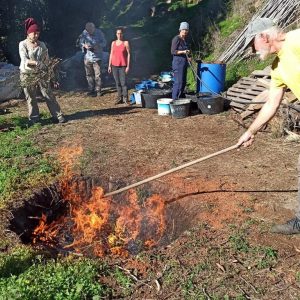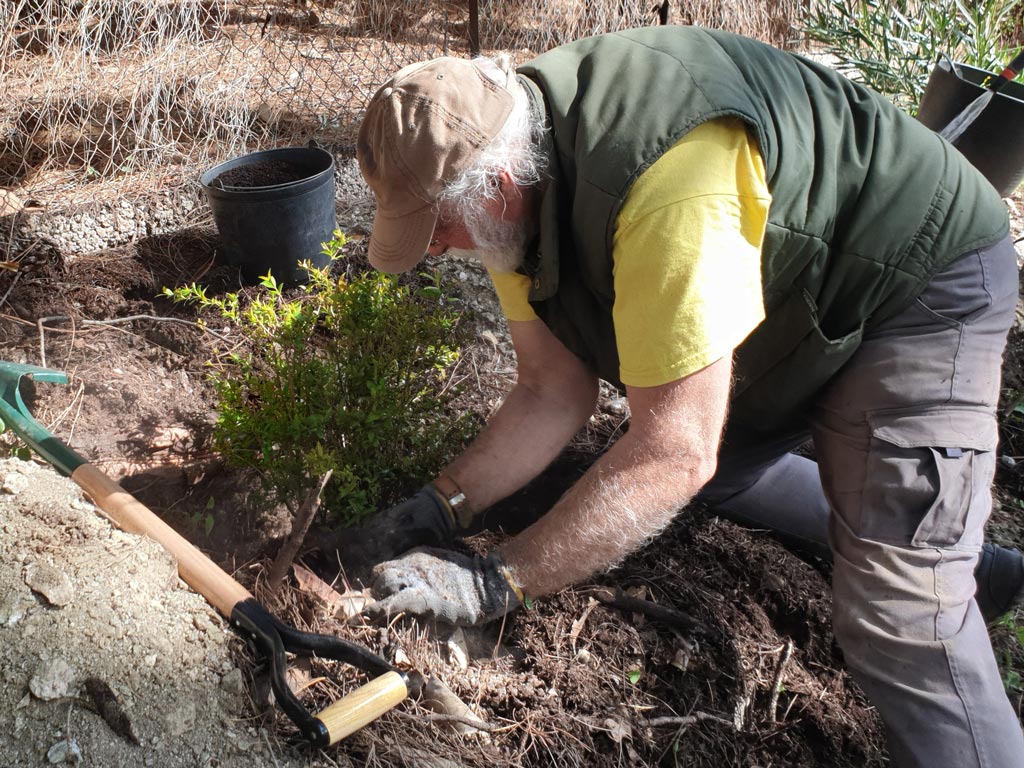Today we would like to take a look at the garden of our yoga centre in Marbella. The yoga centre is about a 20-minute drive from our finca. Both the finca and the yoga centre are part of the Humanitao Foundation; at both, we regularly share our experiences and have a lively exchange of ideas.
For years we have had difficulties with the soil of our ashram garden: it is simply poor in nutrients. As we don’t want to work with artificial fertilisers, the wonderful experiences we had on our finca with preparing the soil with compost, mulch and Biochar gave us the impetus to work the soil in our garden in this way, too. This year and last year, Andreas and Katja held very informative talks entitled ‚Soil Organisms and Plants‘, ‚Edaphon‘, ‚Compost‘ and ‚Carbon Farming'[BC1] . Both of them gave us detailed, very interesting and informative insight into how these topics are interconnected. It was also interesting to realise that every small farmer or garden owner, including us, can ultimately make an important contribution to the entire ecosystem, to climate neutrality and CO2 reduction. That is motivating.
We had already started making charcoal on a small scale (in a metal bucket) last year. But inspired by the successes on the finca and the background information from the lectures, we increased our charcoal production from 40 litres last year to 120 litres this year. We also got the idea of working small beds and plantings with this new knowledge to see whether the poor soil in our garden could be improved over the years using this method.
The first bed we worked on with this in mind was a bed that is home to our old bamboo. We decided to turn this bed into a bamboo bed and bought three more bamboos. The planting holes were filled with a mixture of horse manure, compost, worm humus and charged charcoal. The bed was enriched with compost and generously covered with mulch. An irrigation system provides the necessary water.
Working in this new way gives us great pleasure, and if the soil reacts favourably, we would like to prepare more beds in this way in the future.
Part of our property’s hedgerow had to be reforested. Here, too, we filled the fourteen planting holes with a mixture of horse manure, compost, worm humus and charged charcoal. In addition, the entire hedge was supplied with a drip line. For the hedge, we bought almost exclusively plants that also provide food for bees.
As part of this experiment, we also decided to work a small bed initially with horse manure, green manure and mulch. We will plant zinnias in early summer. Depending on how the zinnias grow, we will be able to recognize from our experience whether the soil quality has improved. These flowers also bring us great joy when they blossom so varied and bright. If this all works out as we imagine, this process could be repeated annually with horse manure, green manure, mulch and zinnias, and we will be able to see how our garden soil recovers over the years. An exciting experiment.


